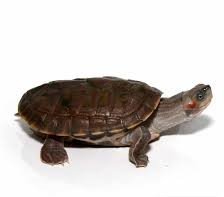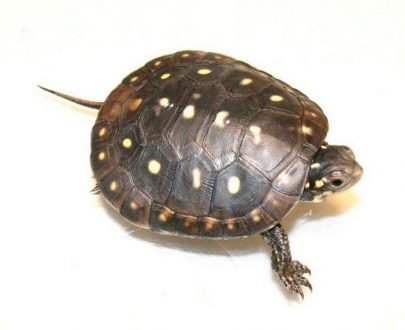The Florida Softshell Turtle (Apalone ferox) is a species of turtle found in the southeastern United States. Its flat, pancake-shaped shell and large, snorkel-like nose distinguish it. Because of their distinctive appearance and fascinating behaviour, these turtles are immensely popular as pets. Our online business sells healthy and attractive Florida Softshell Turtles, which make excellent pets.
The Florida Softshell Turtle (Apalone ferox) is a rare freshwater turtle found only in the southeastern United States. These turtles are distinguished by their soft, flat, leathery shells that are grey or brown with yellow or cream-colored markings. Florida Softshell Turtles have the following characteristics:
The Florida Softshell Turtle has a leathery shell that distinguishes it from other turtle species’ hard shells. This permits them to travel through the water more rapidly and easily.
Adults can reach lengths of up to 18 inches and weights of up to 35 pounds, making them one of the largest freshwater turtle species in North America.
Long neck: The Florida Softshell Turtle has a long neck, which allows it to readily reach the water’s surface to breathe.
Check Out – Baby Jungle Fire Het T+ Albino Boa, Amazon Basin Emerald Tree Boa
Webbed feet: These turtles have webbed feet, which let them to glide fast and gracefully through the water.
Florida Softshell Turtles are opportunistic feeders, eating a variety of prey such as fish, insects, crabs, and plants.
These turtles are notorious for their aggressive behaviour, particularly when threatened or provoked. They can be highly territorial, and if they feel threatened, they may attack other turtles or even humans.
As long as their specialised demands are addressed, Florida Softshell turtles are relatively easy to care for. These are some crucial care guidelines:
Florida Housing Softshell turtles demand a swimming area with plenty of space. A 75-gallon tank is the recommended minimum size for one adult turtle. The temperature of the water should be kept between 75 and 80 degrees Fahrenheit. A basking place with a heat lamp should also be supplied.
Diet: Because these turtles are omnivores, they require a varied diet that includes both animal and plant stuff. Commercial turtle pellets, fish, insects, and leafy greens like kale and spinach can be offered to them. To prevent overfeeding, provide food in tiny portions.
Water Quality: To preserve water quality, a good filtering system is required. To remove garbage and preserve water chemistry, partial water changes should be performed every 2-3 weeks.
Check Out – Armadillidium Peraccae Isopods, Magic Potion Isopods
UVB lighting is required for the health of Florida Softshell turtles. The illumination should be turned on for 10-12 hours per day and updated every 6-12 months.
Handling: These turtles can be fearful and aggressive if they feel threatened. To avoid injury to both the turtle and the person, it is critical to handle them softly and with care.
Frequent check-ups with a reptile veterinarian are required to ensure the turtle’s health and that any health concerns are handled as soon as possible.
Florida Softshell turtles can live a long and healthy life in captivity provided these care instructions are followed.
Long Neck Turtle Florida can give their owners with a variety of benefits, including:
Florida natural pest control Softshell turtles can help keep mosquitoes and other tiny animals in check in your backyard pond or aquarium. They consume a wide range of prey, including snails, crayfish, and tiny fish, making them an effective natural pest control solution.
Educational possibilities: These turtles can be excellent complements to classrooms and instructional programmes. They give children hands-on learning opportunities and teach them about the importance of conservation and habitat preservation.
Relaxation and stress relief: Watching these turtles swim and sunbathe in the sun may be both calming and stress-relieving. The sound of running water and the presence of aquatic animals are both comforting and healing for many individuals.
Florida is low-maintenance. Softshell turtles make excellent pets since they require little care. They do not need to be fed on a daily basis and can go for several days without eating. They also do not require walks or exercise like other dogs, making them an ideal alternative for busy owners.
Extended lifespan: With proper care, these turtles can live up to 50 years in captivity, which means they can provide company for many years to come.
The Florida Softshell turtle has a distinct appearance due to its flat, pancake-like body and large snout. Because of their unique look, they can be an engaging discussion piece as well as a visually appealing addition to any aquarium or pond.
In conclusion, the Florida Softshell Turtle is a distinct and fascinating species that makes excellent pets for anyone interested in maintaining turtles. They require a large aquarium or pond with clean water, a balanced feed, UVB lighting, and a basking space and are quite easy to care for. You may have a healthy and beautiful pet while also contributing to the conservation of this vital species by purchasing a Florida Softshell Turtle from our online store.







Customer reviews
Reviews
There are no reviews yet.
Write a customer review